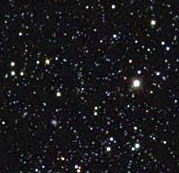
Stars seen by the SDSS camera
When astronomers look through their telescopes, they see billions of stars. How do they make sense of all of them?
Classification lies at the foundation of nearly every science. Scientists develop classification systems based on the patterns they see. For example:
- Biologists classify plants and animals into groups based on their structure
- Geologists classify rocks and minerals by their origins
- Chemists classify compounds by what elements they contain
Astronomers are no different. We classify planets by their composition (rocky planets or gas giants), galaxies by their shape (spiral, elliptical or irregular), and stars by their spectra.
Classifying star spectra was a key step for astronomers in discovering how stars work. Thus, in astronomy as well as other sciences, the seemingly ordinary step of classifying things eventually yields critical insights into our world.
Before You Start
To do the activities in this project, you will need to understand how spectra are formed, the relationship between the shape of a star’s thermal spectrum and the star’s temperature, and what absorption lines are.
If you need a refresher, you may want to read the pages on Continuous Spectra and Discrete Spectra at Nick Strobel’s Astronomy Notes before beginning.
Choose one of the following activities to get started. You can do them all in order, or one at a time:
- Spectra of Stars: a Brief Review
- Activity 1: Exploring Spectra
- Activity 2: Classifying by Line Strength
- Activity 3: Classifying by Temperature
- Activity 4: The Connection between Temperature and Line Strength
- Research Challenges
